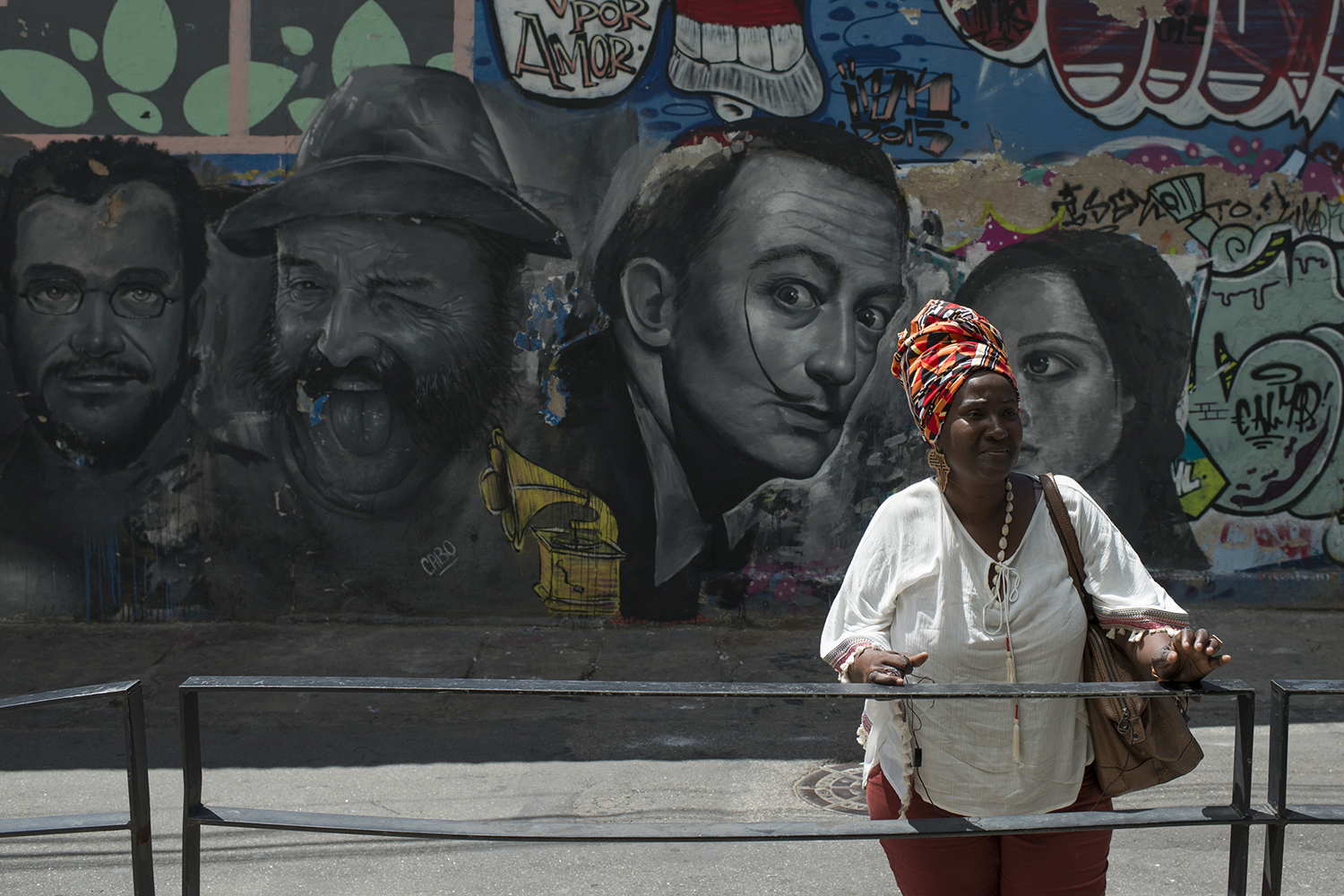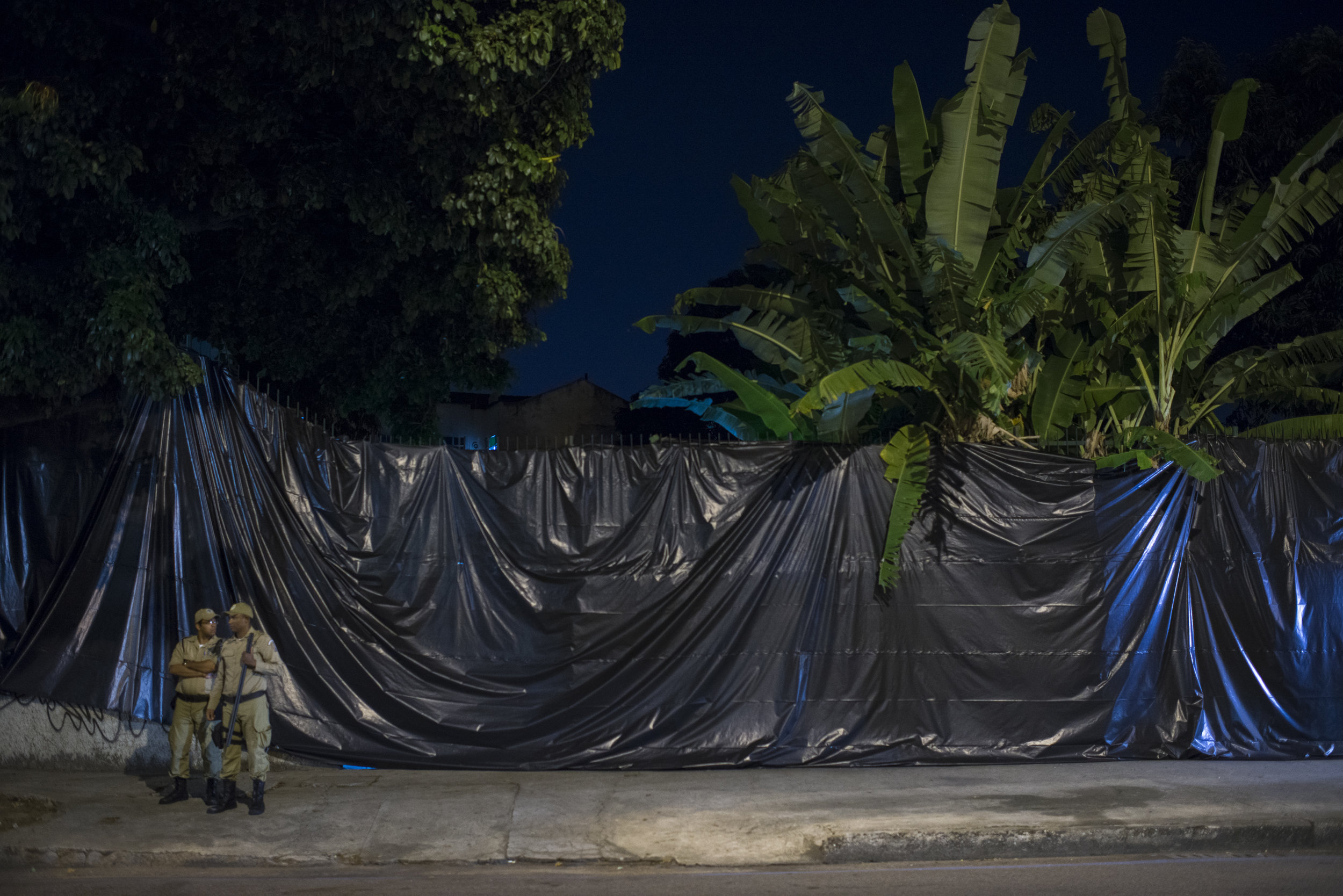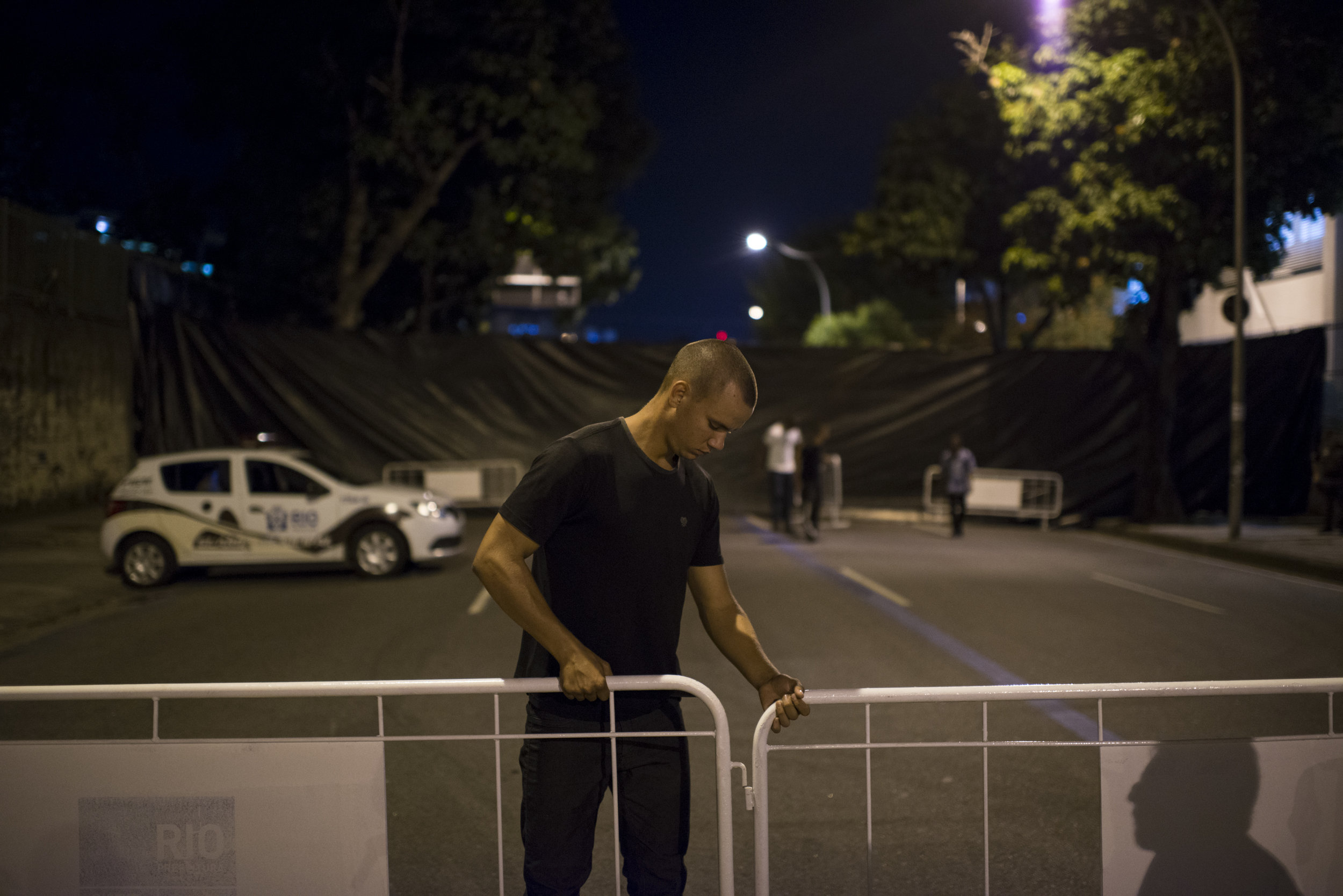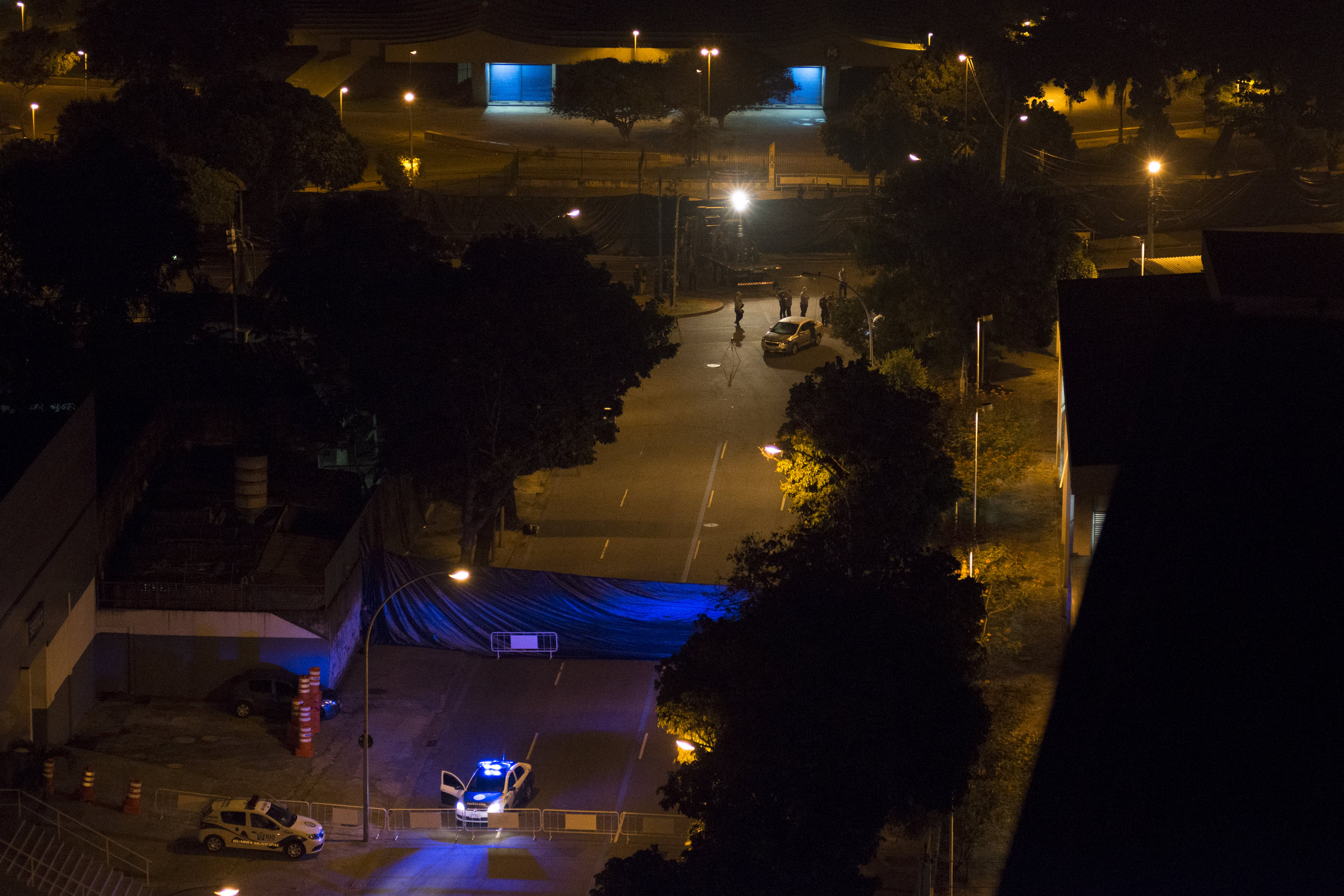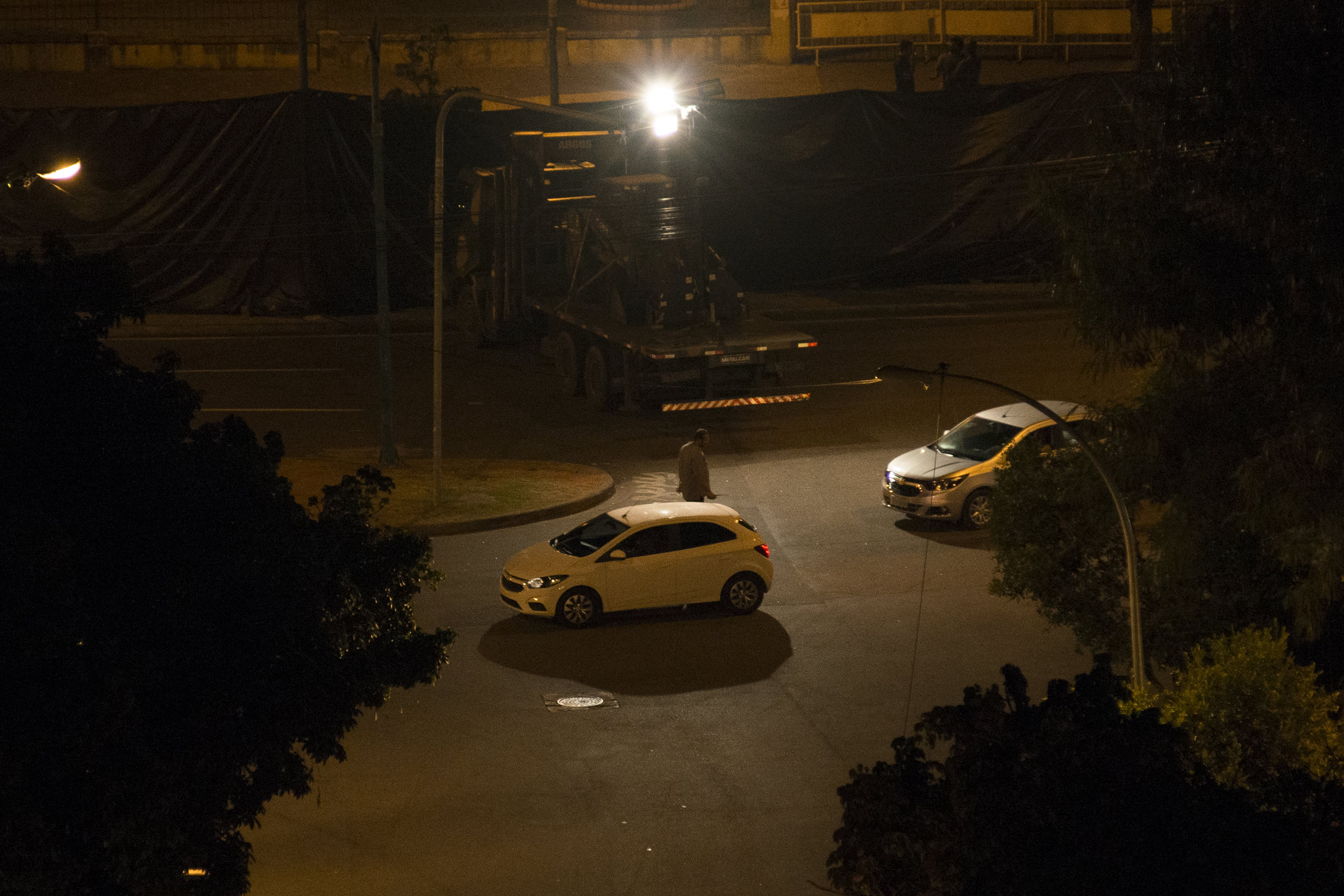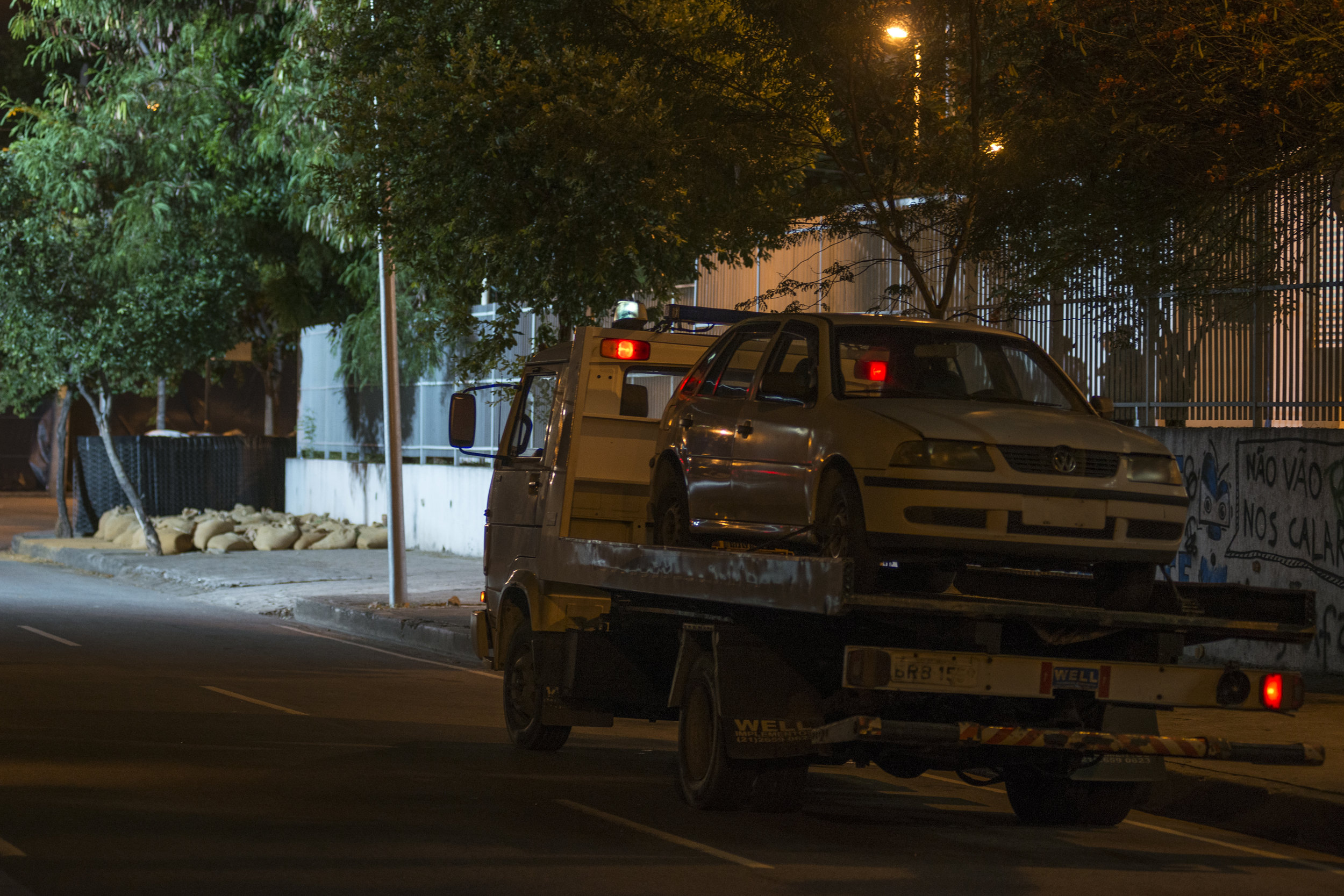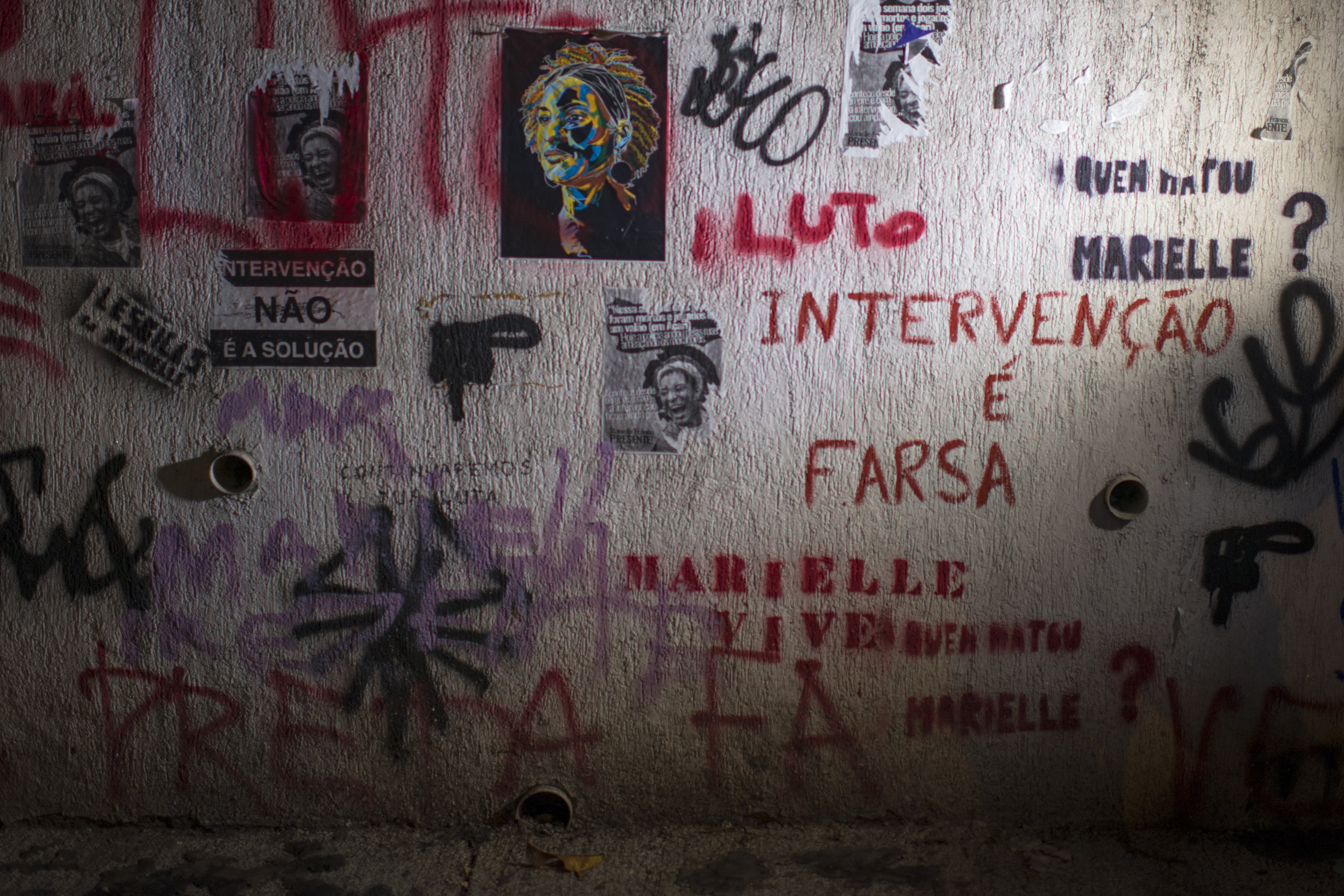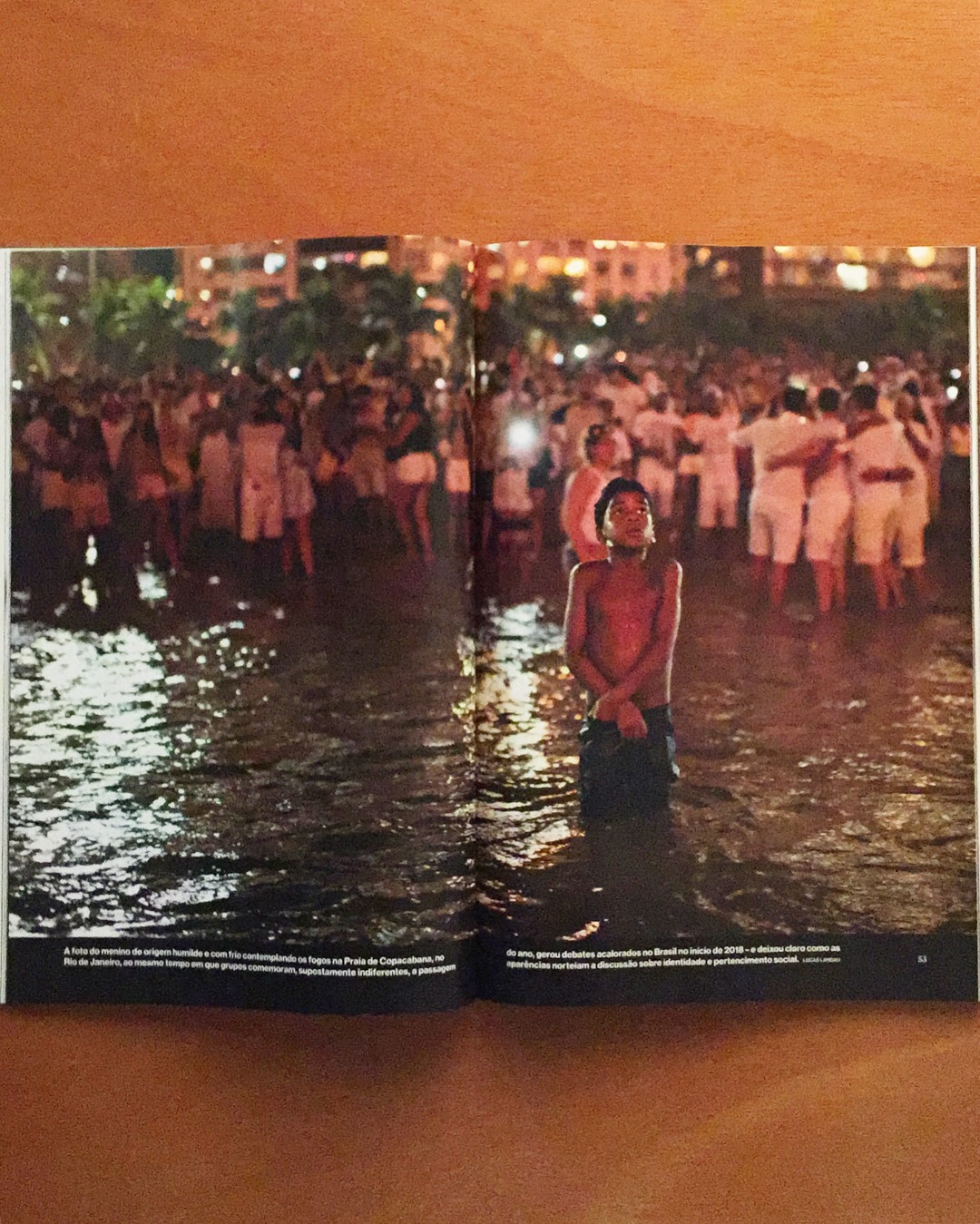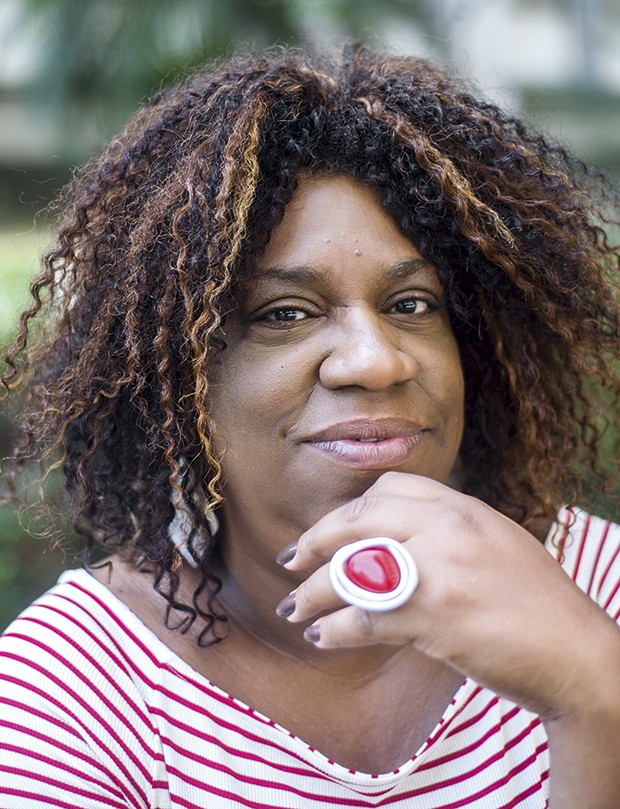Tá no ar um trabalho super importante feito por duas mulheronas da porra sobre o absurdo que o governo brasileiro faz com as crianças indígenas ao separá-las das mães através do conselho tutelar. No vídeo (abaixo) e na parte escrita da reportagem, a Tatiane Klein e a Luiza Calagian contam histórias que precisam ser debatidas.
Ñu Vera Resists
This Indian village is about to be removed and destroyed.
The Indigenous Reserve of Dourados, in Mato Grosso do Sul, Brazil, is crowded with 16.000 Indians in a little bit more than 3.000 hectares. That’s why part of the Kaiowá people occupied an area next to the reserve that they say is their traditional territory, where 30 families are living nowadays.
However, the owner of the land, a farmer, is asking in court for the piece of his land back, and the judge agreed. Ñu Vera can be destroyed at any moment.
When I arrived, I met Ambrósio (61), a community leader. After I introduced myself, I asked if I could help with my work in their fight for their land. He liked the idea and told me to focus on two aspects: the plantations and the children.
The plantations means the land being used in a good way, stable life, each family with a small farm represents the link between them and the land. Land and life are deeply connected in the indigenous conception. Feet on the ground are not dirty feet, it is belonging.
And the children are the future, the new era, the reason of the fight of the Brazilian Indians that is taking 518 years. In Dourados (and in a lot of other places in Brazil), the Indians, when not ignored by society, are segregated.
With almost 10 days living together with the Guarani Kaiowá Indians, I can say for sure Indians did not choose to live in the hard situation they are experiencing today. It is result of the denial of their territory rights, public politics promoted by ruralist front (a parliamentary segment that acts on behalf of farmers), an omissive government and an ignorant and conservative society.
Ñu Vera resists.
(July 2018, Dourados - Mato Grosso do Sul, Brazil)
RISC Alumni
With other 23 photographers, I was selected to be part of the XV RISC Training, in Itatiba, São Paulo (23-29 June). For the first time, the course for freelancers who work in remote and dangerous places took six days: four for medical training (by Wilderness Medical Associates) and two for security training (by Steve Cook).
It was a life-changing week. We learned a lot about rescuing people and had an intense time together as a group of photographers. Very nice moment to know colleagues and talk about our experiences. Thank you very much, RISC Training!
From now, we are Reporters Instructed In Saving Colleagues, Course XV - Fazenda Pereiras, Itatiba, São Paulo. Picture: Scout Tufankjian.
Picture of June 2013 protests in Revista Piauí
The last edition of Revista Piauí (June 2018) has a very good article about the impacts of the June 2013 protests in the 2018 election, wrote by Marcos Nobre. One photo I took during the protests of June 2013 was published to illustrate the piece. It is such an honor to have my work published in Revista Piauí, a publication that I admire a lot.
Portraits for GQ Brazil June 2018
This month was published a series of portraits made in Leblon beach for GQ Brazil with Claude and Thomas Troisgros. Working together for a long time, father and son now have individual paths. The article is by Alexandra Forbes.
Rocinha for UOL special article
Is out now on UOL a special issue about peace in Rocinha, one of the biggest favelas in Brazil, with 100 thousand residents. The reporter Marcela Lemos talked with residents about how the violence is changing their lives. Because of the "war on drugs", maintained by the State and Federal Government, students cannot go to school, residents cannot go to work and a lot of social projects in the community are empty.
In 2018 the situation in Rocinha is worst than the last years. Brazil needs to talk about this war on drugs that is killing many people and it is not changing anything.
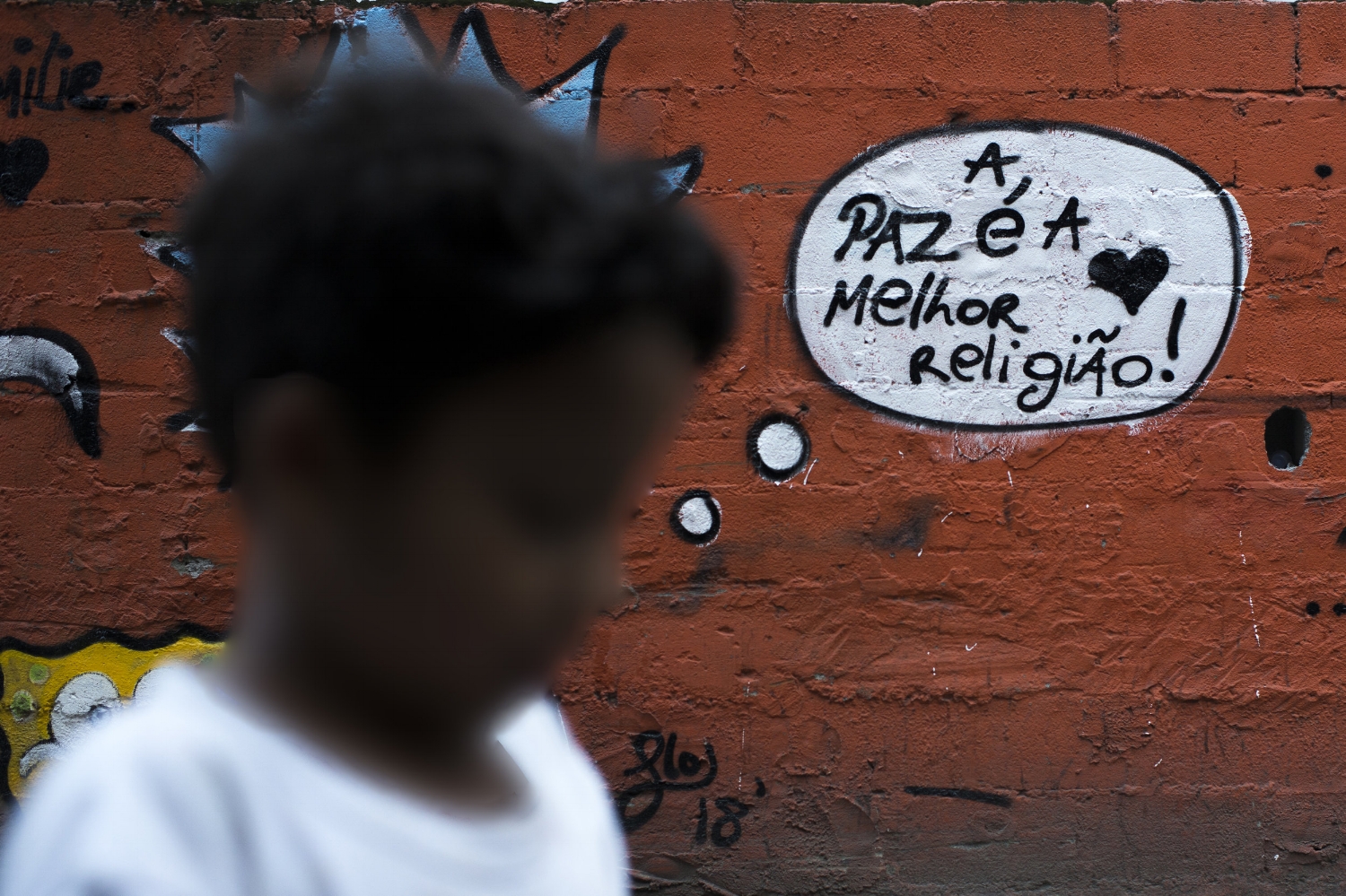



Brazil's trucker strike coverage for Folha de São Paulo
Last friday (25th May) I was commissioned by Folha de São Paulo newspaper to cover the supermarkets in Rio during the Brazil’s trucker strike. The vegetables and some fruits disappeared from local supermarket shelves. And who still had it, was selling with prices shot up by as much as 400 percent due to transport difficulties.
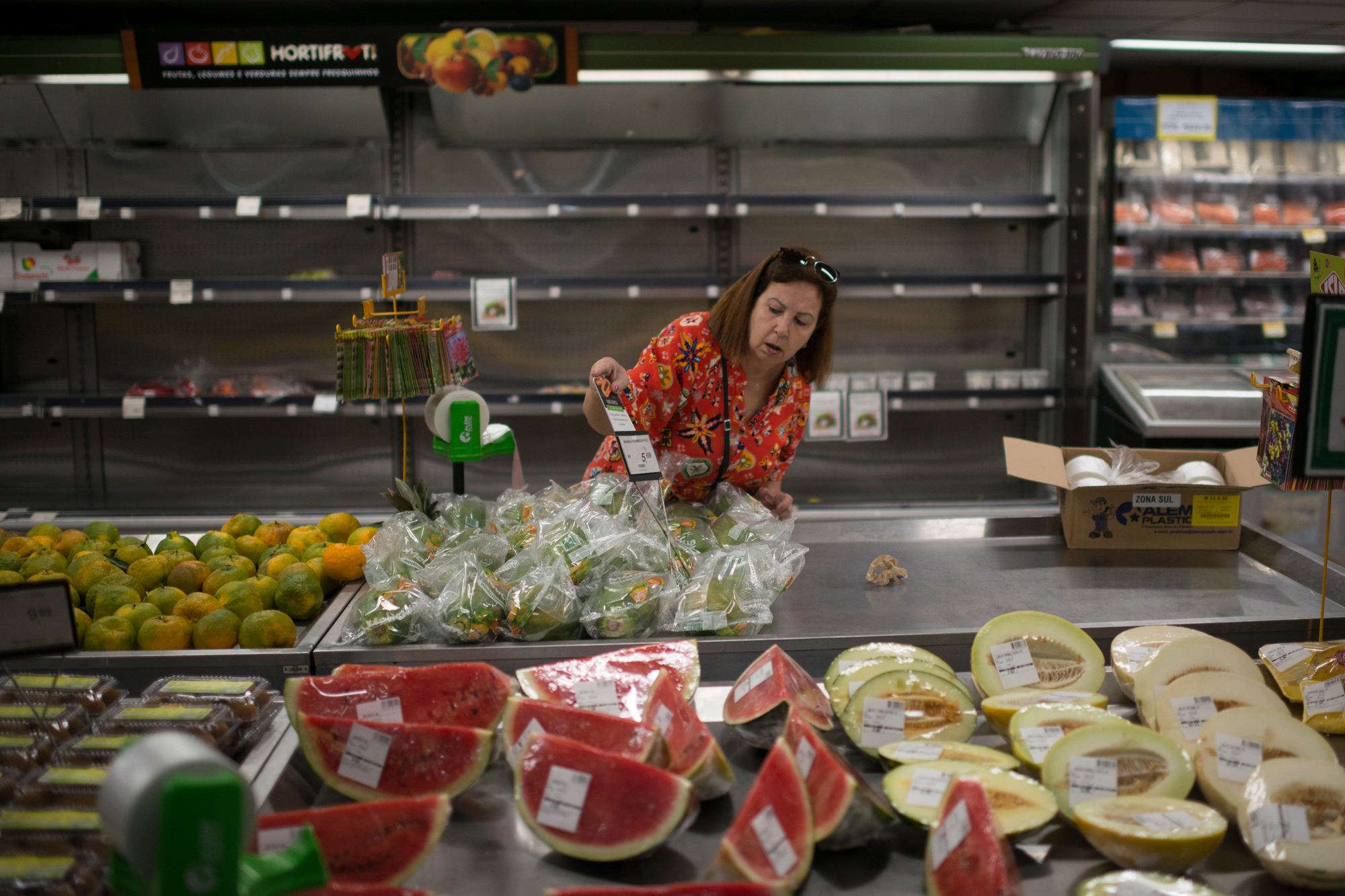


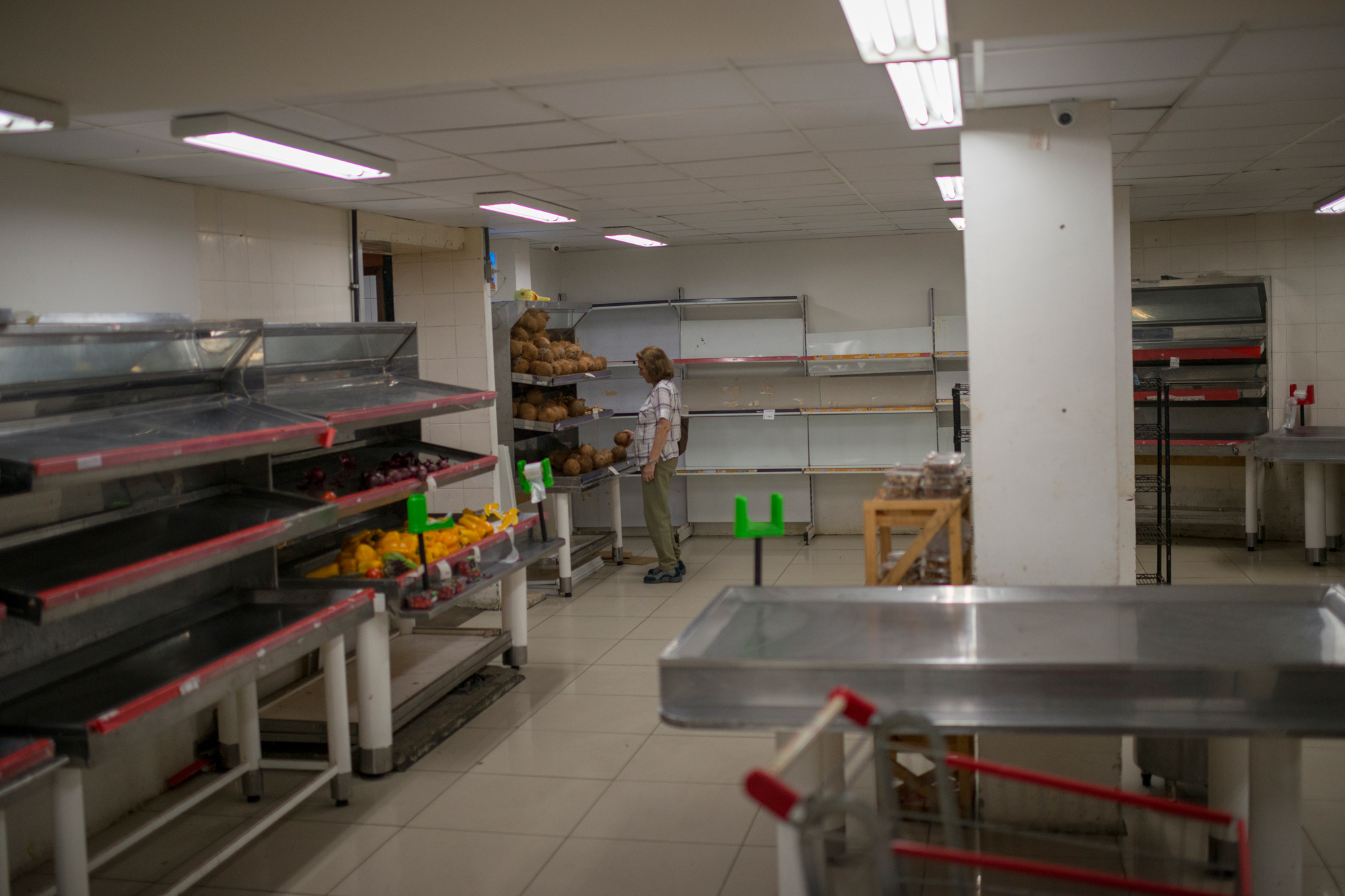


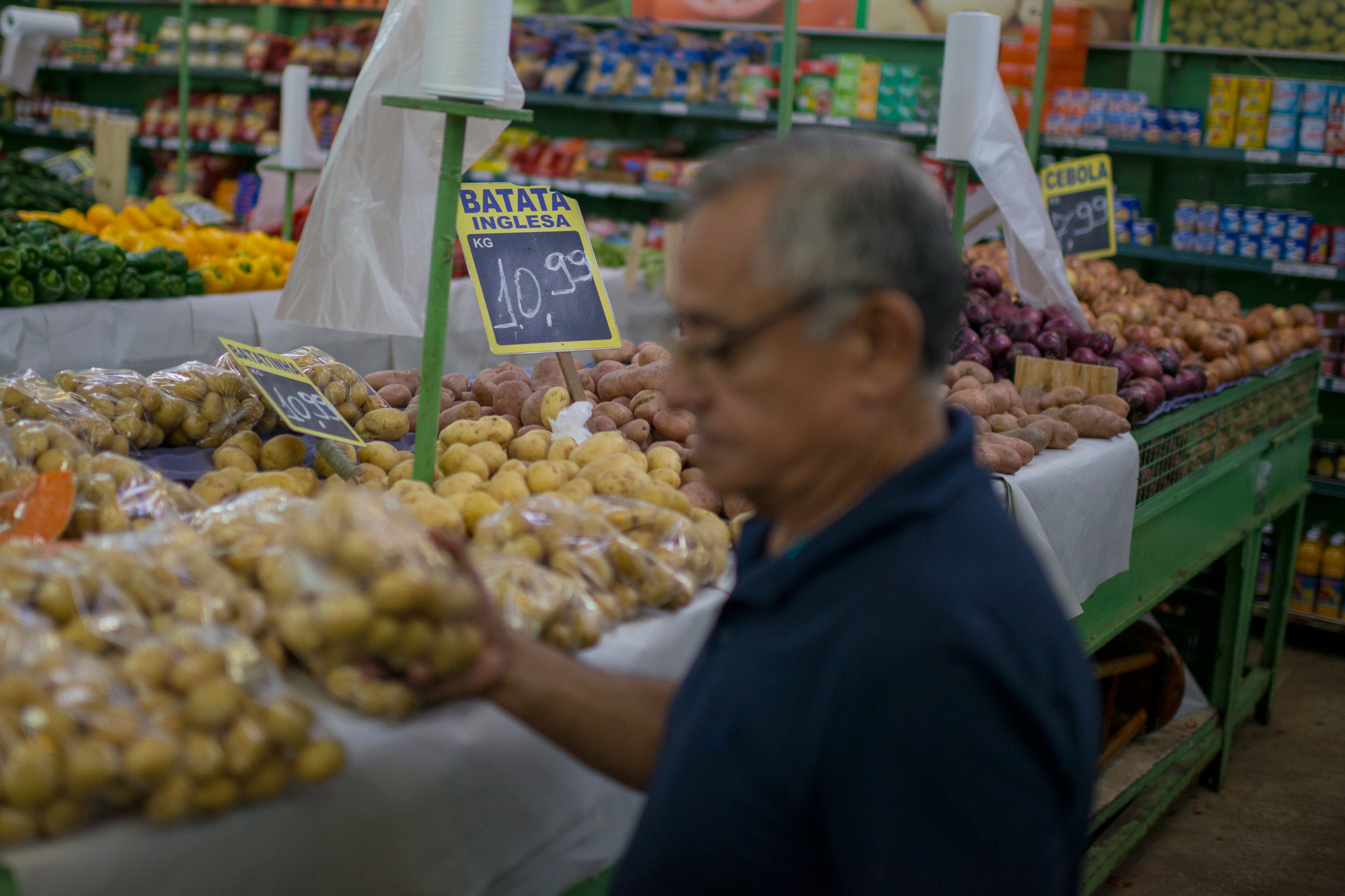
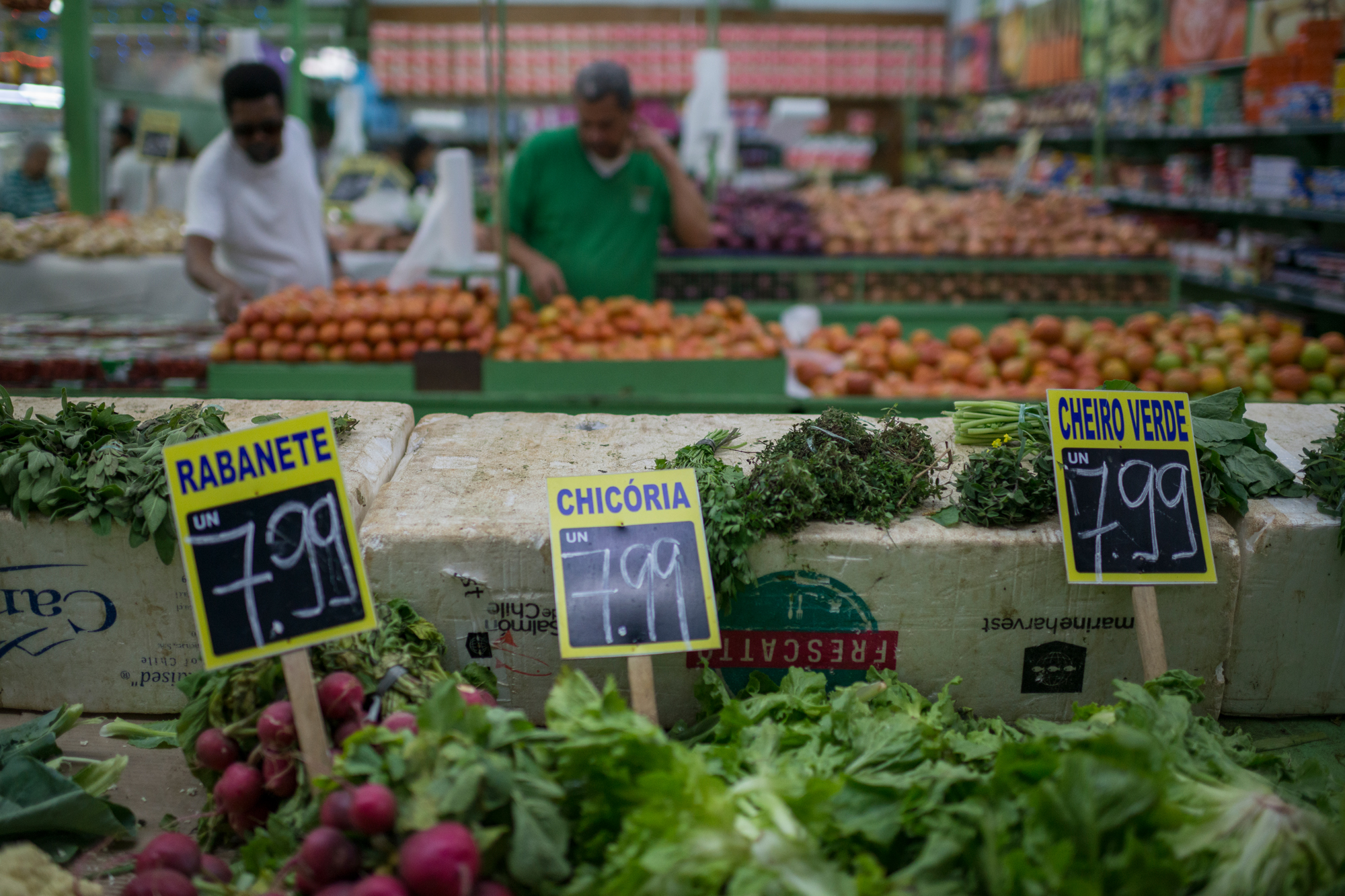
My first assignment for El País Brasil
I'm happy to share my first work for El País Brasil. It's a portrait of Vagner Amaro, owner of Malê Publisher, specialized in black authors. It was very nice to meet Vagner and to start my collaboration with El País in a very important article by André de Oliveira.

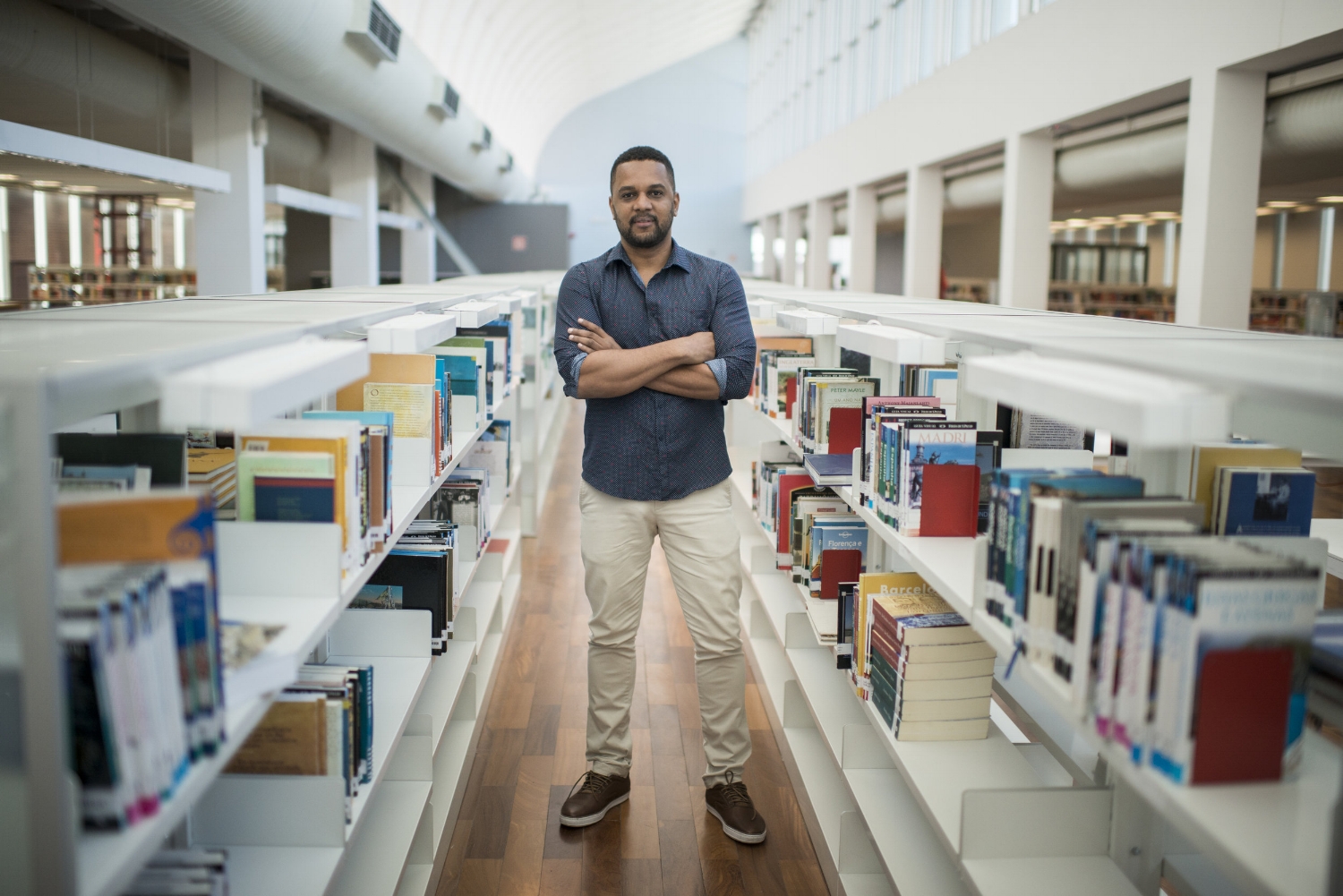
Reconstitution of Marielle Franco’s crime for UOL
Last May 10th, the civil police did the Marielle’s crime reconstitution, in Estácio, central area of Rio de Janeiro. I’ve been there to cover this sad night for UOL. The investigations are coming to an end and it seems there is participation of another city councilor (Marielle’s colleague) who has business in a favela where Marielle was working as human rights defender.
"Vegas" on Financial Times
Three photos of "Vegas" project were published on Financial Times on April 6, 2018. I would like to thank the picture editors of Financial Times for choosing these photos that I like so much made with an iPhone 6 to illustrate an article about Las Vegas.
Original soundtrack: Gabriel Polo
Carnaval 2018
(ENGLISH BELOW)
Sou apaixonado pelos desfiles de carnaval desde que me conheço por gente. Me lembro de varar as madrugadas assistindo as escolas quando era criança. Na apuração, eu não só assistia com muita seriedade como anotava nota por nota em um caderno. Ainda tenho guardadas essas anotações — atualmente, na era da internet, inúteis.
Talvez esse amor tenha vindo através do vô Tatá, devoto da Portela até o último fio de cabelo. Escola a qual ele foi membro e período de sua vida que ele adorava contar com orgulho e eu adorava ouvir com o mesmo orgulho.
Ele me ensinou desde cedo que carnaval é a festa do povo. Feita durante um ano inteiro, com muita dedicação das comunidades que se unem pela festa. Um ano inteiro de trabalho e anonimato para, naquela noite, serem o centro do mundo por alguns minutos.
Arquibancadas cheias, luzes acesas, frisas lotadas, camarotes transbordando. Que momento lindo para quem ralou meses para colocar aquela escola desfilando na avenida. Um palco merecido para cada integrante se sentir brilhando.
É bonito demais ver de perto. Me emociono praticamente em todo desfile. Aos 18 anos, fiz minha primeira cobertura na Sapucaí, para a histórica Revista Manchete, e o sentimento de pisar na avenida é o mesmo até hoje, 10 anos depois.
Em 2018, fui pautado pelo site UOL para cobrir a dispersão durante as duas noites de desfile e para cobrir três escolas desfilando no sábado das campeãs. Desse trabalho, nasceram quatro séries fotográficas onde tento traduzir em imagens o meu amor por essa festa.
“De Fundos pra Apoteose”, “O Fundo dos Carros” e “No Fundo, Calor” nasceram durante as duas noites em que fiquei na dispersão. “Pano de Fundo”, a série de retratos, tem também imagens feitas no desfile das campeãs.
Rio's Carnival
As a carioca, I love the carnival parade since I was born. I remember being awake during all the night watching the parade on TV when I was a kid. It’s the most popular party in Brazil and the culture of samba was born in Rio, so the parades are very traditional specially here in Rio.
Maybe this love came from my grandfather, who was a member of Portela, one of the most popular samba schools in Rio. He really liked to tell the stories about this moment of his life which he was very proud of, and I loved to listen about this magical world.
The carnival is a popular party. It’s from the people to the world. The samba schools are usually located in the favelas areas around the city and they work hard during one year to shine in the Sapucaí Avenue for some minutes.
Full grandstand, all lights on, crowded seats, overflowing cabins… What a beautiful moment for those who worked a lot to bring the school to the avenue. It’s a well deserve stage with people from the entire world watching them. They feel valued, it is such a beautiful feeling.
To see this party so close it is one of the best experiences in life. Since my first day working on a coverage on the Sapucaí Avenue, 10 years ago, with 18 years old, untill today, I have the same feeling. It’s very emotional.
In 2018, I was on assignment for UOL to cover the “dispersal”: the end of the avenue, where they drive the cars away and where people remove their costumes and leave it in the trucks that belongs to the samba schools before they go away. All that in the middle of Catumbi, a popular neighborhood behind the Apoteose Square (the place with the gigantic M made by Oscar Niemeyer).
It was a new place for me — I used to work on the avenue, inside the parade — but I loved covering the behind the scenes this year. From this work, I was able to create four series: “The Backstage”, “The Cars”, “The Temperature” and “The Portraits”. All made on February 11th, 12th (official parade dates) and 17th (six winner’s parade).
These photographs are the story of my carnival, which continues (almost) the same as my grandfather's carnival. I hope the photos can translate a bit of the beauty of this party and my love for this traditional carioca event.
National Geographic, for the first time
This month I do my National Geographic debut. First time publishing a work on the pages of the iconic magazine. It's such an honor to start my collaboration with this special photo that changed my life (and still changes) in the historic edition about racial discussion. Many thanks, National Geographic Brasil, I hope this is only the beginning :)
A story after Marielle's death
Marielle was a human rights defender. Woman, black, queer and Rio de Janeiro city councilor (the fifth best voted in 2016), she used to fight for the favelas like Maré, where she grew up.
Marielle symbolized the force of the people in politics, she was a brilliant diamond among all corrupt politicians we are sick of. She was our hope and she still is.
They buried Marielle and they planted many seeds. Since the barbaric assassination, I was immersed in the repercussion, covering demonstrations and religious acts.
I also met her family and other important characters of this story. Thinking in a way to explain this whole situation for who is not from Rio nor Brazil, I decided to create a story with the material I captured during the seven days after Marielle's dead.
This is what I saw and what I've documented in the first week without Marielle. She left us, but her legacy will live forever. Marielle, Presente!
Marie Claire Brazil April 2018 is out
Last month, I did two special portraits to Marie Claire Brazil. The first person was Marinete da Silva, 66 years old,lawyer, Marielle Franco's mother. She received the reporter and I at her home for a long and unforgettable talk (article by Luiza Karam, in Portuguese).
And the second person I photographed was Jurema Werneck, Amnesty International Brazil's director. Powerful woman who had grew up in the favela, just as Marielle, and became leader of the activist organization in Brazil.
(click on the image to enlarge)
On the cover of Folha de São Paulo
On March 17th I was on assignment for Folha de São Paulo newspaper to cover a social action promoted by the Brazilian army, the mayor and the governor at Vila Kennedy. The place, in Bangu, suburb of the city, is "a model" to the federal intervention on Rio de Janeiro's public security.
A picture I took during this assignment was published on the cover the day after (March 18th), on Sunday edition of the newspaper. The image shows a simbolic hug between the mayor, Marcelo Crivella, and the interventor, General Walter Braga Netto, Brazilian army's leader.
The federal intervention was a polemic decision made by the governor Luiz Fernando Pezão (who lost control of the security because of the corruption in his government) and the presidente Michel Temer, (who has popularity near zero), both members of the Brazilian Democratic Movement (MDB) party.
Portraits for Marie Claire Brazil
I did two portraits for Marie Claire Magazine's latest edition, February 2018. It was a pleasure meeting two strong women: Nilza Valéria Zacarias and Flora Gil.
Valéria is a feminist and journalist who fights to bring the religious discussion to the table with a lot of respect and intelligence. And Flora is a powerful business woman in the artistic sector.
You can read the articles online (in Portuguese) here & here.
The conductor Sarah Higino for TPM Magazine
I discovered Sarah on a TV show. I was amazed by her sweetness and her work teaching music for public school’s students from Volta Redonda (in the suburbs of the state of Rio de Janeiro).
Then I wrote the project and “sold” it to TPM, women’s magazine published by the publisher “Editora Trip”.
The story is about Sarah Higino, this incredible woman with a magic transformation power through the music. To see the story published on the online version of TPM, click here. And click on the picture bellow to see full story. Both in Portuguese.
New Year's celebration in Copacabana for Reuters
On the last day of 2017, I was on an assignment for Reuters News Agency in Copacabana, covering the famous fireworks of New Year’s eve.
It was my last and my first job of the year. A really nice way to start 2018!
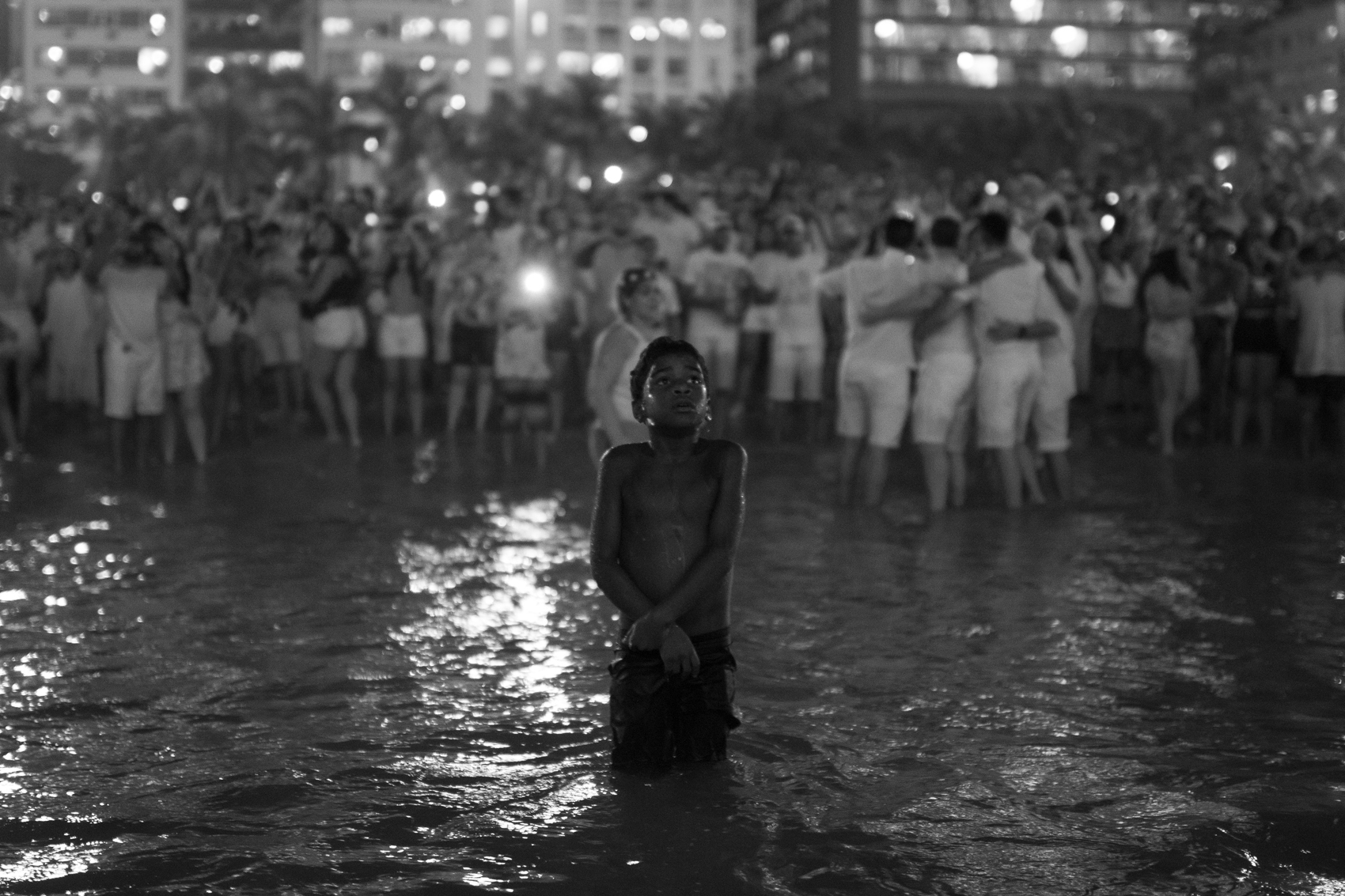
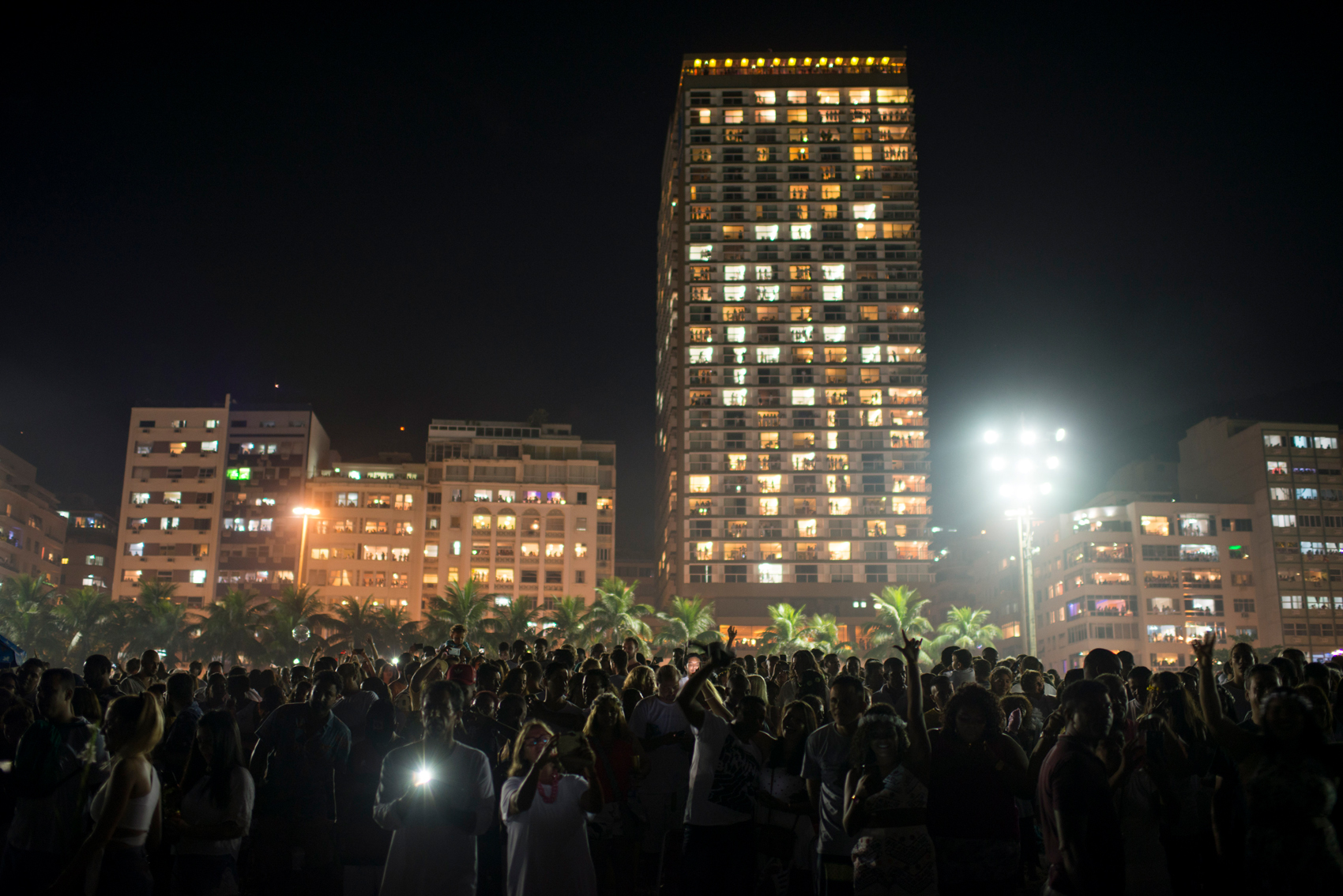





2017 is not finished yet: newest work is out now!
My latest job was an assignment for UOL to cover one day in a life of a person who was victim of racism in 2017. This story is part of a series of four articles on relevant issues for our society this year.
The photos are part of a video narrated by the character itself and can be watched (in Portuguese) here.
